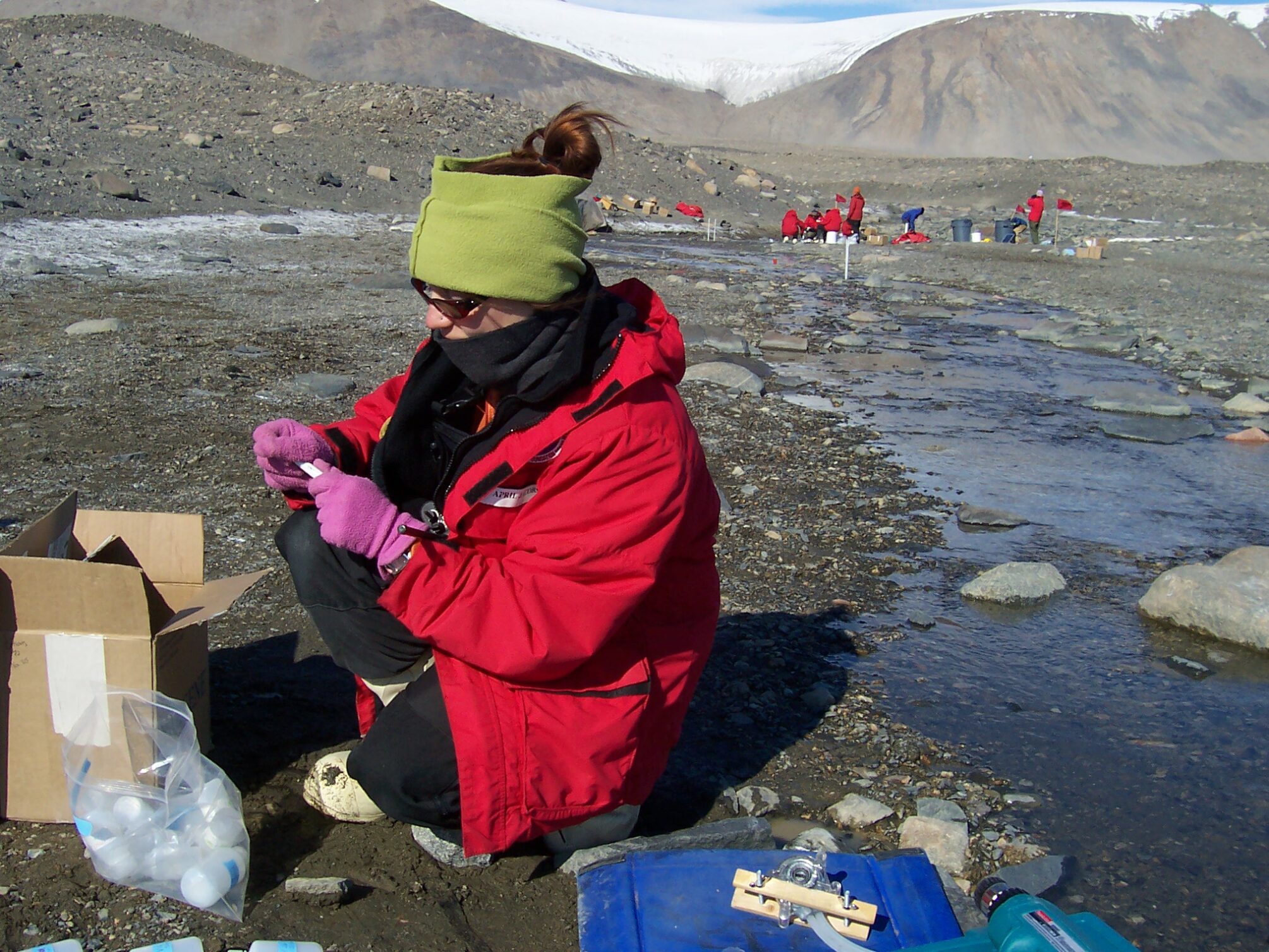
The Von Guerard stream at the McMurdo Dry Valleys LTER site represents one extreme of the poles-to-tropics extent encompassed by the Si in streams synthesis project.
Credit: Barb Woods, MCM LTER
Riverine exports of silicon (Si) directly influence global carbon (C) cycling through the growth of diatoms, ubiquitous autotrophs in marine and freshwater systems, which account for ~25% of global primary production. Rivers play essential roles in processing and supplying the Si necessary for diatom growth, but we have limited knowledge of the controls on river Si exports, especially how they vary across biomes. Prior work has shown conflicting importance of various drivers, such as lithology, riverine productivity, and terrestrial vegetation in controlling river Si exports. Capturing a baseline understanding of how these factors influence Si exports across biomes is essential for understanding freshwater and marine C cycles, especially during this period of rapid climatic warming. This synthesis will answer three specific research questions related to the roles of 1) terrestrial vegetation, 2) river productivity and 3) climate warming in controlling river Si exports across biomes. Our proposed sites span the globe (e.g., Antarctic, tropical, temperate, boreal, alpine, Arctic systems), and present a unique cross-network opportunity to connect LTER-based research with that of the Critical Zone Observatory and USGS. Together, we will create the first data-driven predictive framework of how riverine Si exports will respond to global change.










